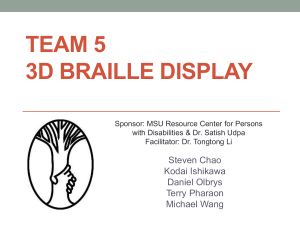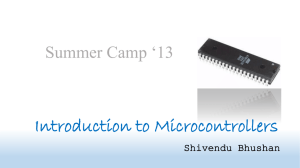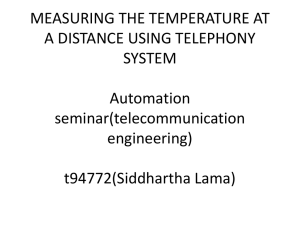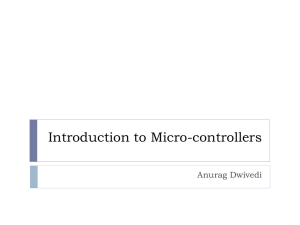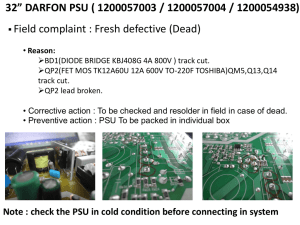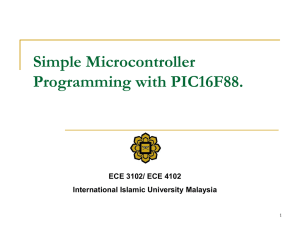Part 2
advertisement
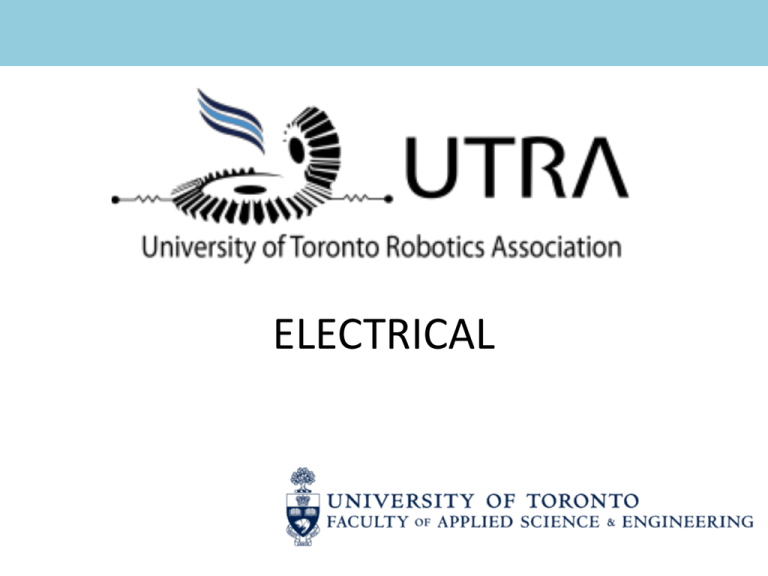
ELECTRICAL Circuits Outline • • • • Power Hub Microcontroller Sensor Inputs Motor Driver Power Hub • Purpose: – Regulate input voltage into the circuit – Allows for flexible power supplies that can be used for your robot (input 7V – 36V; output 5V) – Most ICs and electronic components use 5V • Comprised of a voltage regulator and filtering capacitors • Capacitors act like a buffer before current flows to the load • Voltage regulator reduces the range of voltages down to a set value Circuit Diagram Input Voltage Range : 7V – 36V Input Output Voltage: 5V Output Microcontroller • A small computer on an IC that contains a processor core, memory, I/O peripherals • Purpose – The brain of the robot!!! – Programmable – conveniently control behaviour of the robot • We will be using the ATMega 328-PU microcontroller Atmega 328 Pin Assignments Microcontroller Configuration • Requires: – Vcc and GND connections – Analog Reference (set to Vcc) • Value used as the top of the analog input range – Internal Clock (16Mhz Crystal) • Used as clock input to microcontroller • ATMega328-p contains 13 digital and 6 analog pins to be used as I/O peripherals Microcontroller Configuration Sensor Inputs Analog Signals – Continuous – Subject to electrical noise Digital Signals • Not continuous • Uses specific values to represent information Integration of Microcontroller and Sensors • ATMega328P-PU Pins 23-28 can be used as Analog Input readings from your sensors • Possible Sensors to be used: – Proximity Sensors • Detect presence of nearby objects – Line Sensors • Distinguish between white surfaces and black surfaces • Used to detect bounds for SUMO Arena Motor Driver • Purpose: – Governs the performance of an electronic motor • H-bridge circuits are used to control motors – Enables a voltage to be applied in either direction across a load (controls rotational direction) Motor Driver • We will be using L293D Motor Driver IC – Cheap and easy to use – Works well with the Microcontroller – No need to build an H-Bridge circuit L293D Pin Assignments Motor Driver Configuration • Requires – GND and VCC connections – Enable pin connections from the Microcontroller – Input pin connections from the Microcontroller – Output pins connected to motors – Vs – voltage signal to power the motors Motor Driver Configuration Integration of Microcontroller and Motor Driver ATMega328-P • Digital I/O Pin 12 • Digital I/O Pin 13 • Digital I/O Pin 14 • Digital I/O Pin 19 • Digital I/O Pin 18 • Digital I/O Pin 17 -> -> -> -> -> -> L293D Motor Driver • Enable1 Pin 1 (MOTOR 1) • Input 1 Pin 2 (MOTOR 1) • Input 2 Pin 7 (MOTOR 1) • Input 4 Pin 15 (MOTOR 2) • Input 3 Pin 10 (MOTOR 2) • Enable2 Pin 9 (MOTOR 2) Functionality • In order to turn the right motor, – an enable signal must be given to PIN 9 from the microcontroller – Pins 10 and 15 must set to either HIGH and LOW or LOW and HIGH – Pin 16 must be connected to a 5V power source Functionality • In order to turn the left motor, – an enable signal must be given to PIN 1 from the microcontroller – Pins 2 and 7 must set to either HIGH and LOW or LOW and HIGH – Pin 8 must be connected to a 5V power source End Breadboard Configuration QUESTIONS?

